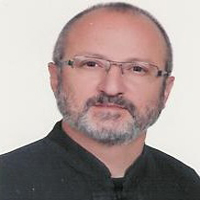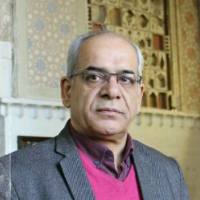Conservation-Based Development Approach in Identifying Urban Landscape of Zahedan City during Pahlavi Period Using Layered Semiotics
The urban landscape of Zahedan is a multi-layered text in which different human, natural, and artificial layers are placed next to each other according to paradigmatic/ syntagmatic principles. Using a rhizomatic communication process and applying the negotiation and intra-code translation tool, these layers have created a meaningful complex. Due to their dialectical relationship with the development process, they have also obtained new identity characteristics, capabilities, and capacities in line with the previous paradigm since their emergence, regarding the changes resulted from the development and progress. But in the recent decades, due to the absence of negotiating and appropriate communicating with the city’s traditional codes, the development process as an “other” has disrupted its rhizomatic behavior and created a gap in the city’s coherent network. In this paradigm shift, today, the residents of Zahedan city are faced with a chaotic narrative and have relatively lost their sense of belonging and affiliation to the city.
The present study aims to present a solution to identify the urban landscape of Zahedan city during Pahlavi period. This is made possible by retrieval and reading of identification signs hidden in the city layers, using layered semiotics and generation method. Layered semiotics implies that the text of a city is gradually formed by encoding/decoding of the codes that are common in a group of humans, and become understandable in the same way.
The human layer in the urban landscape of Zahedan has emerged in the city fabric through the convergence of values, worldviews, and socio-cultural foundations that have been present since the formation of the initial city core up to date. The presence of different ethnicities and nationalities such as Sistani, Baluch, Birjandi, Kermani, Yazdi, Afghan, Pakistani, and Indian, each having different beliefs, religions and paradigms, has given a unique feature to the city. Various individuals of different nationalities in Zahedan city come from a context composed of other contexts in itself. Thereby, in the context of Zahedan city, we are in a fluid and dynamic network of habits that are rhizomatically interconnected and have formed a complex called Zahedan urban landscape. The artificial layer is a combination of different contexts derived from the diversity of human layer contexts. This means that the form of constructed buildings, type of materials, construction techniques, the use or loss of decorations and colors, spatial layout of public and residential spaces, and other factors in the urban landscape of Zahedan city during the First Pahlavi period result from at least three major contexts: 1) The “so-called modern” architecture and common way of thinking during the First Pahlavi period and during Reza Shah reforms; 2) The traditional architecture in desert areas of Iran adopted by people of Yazd and Kerman, observed in the city’s significant and prominent buildings; and 3) Vernacular architecture adopted by other residents including Baluch and Sistani, which is also derived from the cultures and subcultures of these people’s primary habitat. The people representing a context have an influence on the city, regarding their status and authority.
Considering the connection of rhizomes and the link between the codes existing at their connection points, changes occur in urban landscapes where some signs are found, changed, or demolished. The only solution for the survived signs is to maintain them in their status quo. In case the signs are deteriorated and completely disappeared, it is better to be recreate (reconstruct) or regenerate them by infill development, as long as the originality and ancient identity are not impaired. In this way, a new sign can act as a symbol of an old sign in the past times and be reminiscent of something lost/eliminated over time. There are also various solutions for dealing with corrupted or changed signs: if the sign changes are in line with the contemporary currents and discourses and at the same time adhere to the old signs and features of the original urban cultural landscape fabric, the signs can be conserved in the same state; and if the sign changes distort the meaning of the place or destroy its identity, the changed sign can be re-modified by another change in the existing discourse. In other words, a new discourse in line with the urban identity and at the same time in accordance to contemporary requirements can be created in latter case. In this way, the conservationist seeks to expand the frameworks through criticizing, translating, measuring the frameworks, and dealing with the “other”, thereby reproducing the distorted meaning by creating a link between the existing codes at different times; an intervention that can be resumed in the present time and changed over time. However, it is not aimed at reproducing or imitating the pre-existing patterns and signs; because, repeating the signs without linking them to their history, breaks the urban spatial-temporal integrity and undermines the concept of authenticity. Rather, it is meant to create a balanced relationship between the urban network and the changes that occurred due to the developments of these areas. So, the created change can conserve its meaning. In this way, the city regains its legibility through signs, regenerates its lost identity, simplifies its meaning and restores its identity easily.
- حق عضویت دریافتی صرف حمایت از نشریات عضو و نگهداری، تکمیل و توسعه مگیران میشود.
- پرداخت حق اشتراک و دانلود مقالات اجازه بازنشر آن در سایر رسانههای چاپی و دیجیتال را به کاربر نمیدهد.



